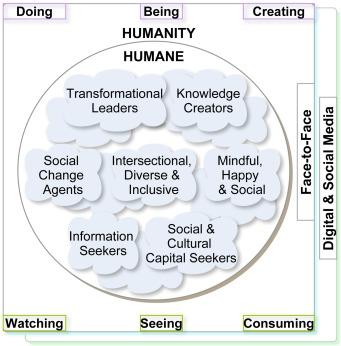Global Partnerships Revolutionizing Educational Technology: The Rise of International Collaborations
In today’s rapidly evolving digital landscape, educational technology (EdTech) is becoming a focal point for innovation across the globe. As schools,universities,and students embrace digital learning,international collaborations and global partnerships are increasingly pivotal in driving technological breakthroughs and ensuring equitable access to quality education. This article explores the transformative influence of global partnerships in edtech, highlighting their benefits, success stories, and practical strategies for educators and institutions worldwide.
International Collaborations: A New Era in EdTech Innovation
The rise of cross-border partnerships between education providers, technology companies, governments, and nonprofits is propelling the evolution of digital learning systems.By combining resources,expertise,and diverse perspectives,international EdTech collaborations are creating scalable and culturally sensitive solutions that address varying educational needs.
- Shared research and progress leads to fast-tracked innovation and better learning outcomes.
- Access to global knowledge supports curriculum development and teacher training.
- cross-cultural exchange integrates inclusive pedagogies and localized content, enhancing engagement for diverse student populations.
Benefits of Global Partnerships in Educational Technology
Embracing international collaborations brings a plethora of advantages,not only for educators but also for students and institutions.Below, we detail the core benefits:
1. Accelerated innovation and technological Advancements
Partnering globally enables access to cutting-edge EdTech solutions, software development expertise, and research, allowing rapid prototyping and deployment of educational tools suited to various learning environments.
2.Increased Reach and Educational Equity
International collaborations help tackle digital divides by sharing knowledge and technologies with underserved regions. Projects like affordable online courses and localized educational apps ensure inclusive access to digital learning opportunities.
3. Cultural Diversity and Learner Engagement
Integrating cross-cultural perspectives fosters more relatable digital content and interactive learning experiences. Students benefit from collaborative projects, language exchanges, and exposure to global viewpoints.
4. Enhanced Teacher Training and Professional Development
Professional development programs and digital resources created through global partnerships offer teachers new skills in technology integration and collaborative instruction, increasing the overall quality of education.
Case Studies: Global Partnerships Impacting EdTech
Several remarkable examples highlight how international collaborations are transforming the EdTech sphere. Let’s delve into a few standout case studies:
Case Study 1: UNESCO and Global Education Coalition
In response to the COVID-19 pandemic, UNESCO launched the Global Education Coalition, bringing together over 175 partners worldwide, including major tech companies and educational institutions. This collaboration provided digital learning materials, supported teacher training, and helped ensure continuity for millions of learners during school closures.
Case Study 2: Microsoft and African Universities
Microsoft has partnered with several African universities to deliver cloud-based learning platforms, AI-powered educational tools, and curricula tailored to local educational standards. thes programs have significantly increased digital skill development and employability for students across the continent.
Case Study 3: ERASMUS+ and European Cross-Cultural Exchanges
The ERASMUS+ initiative enables students and educators to engage in academic exchanges and joint online projects. By leveraging digital platforms and international collaboration, participants develop intercultural skills and enhance digital literacy, preparing them for a globalized workforce.
Practical Tips: Fostering Successful International EdTech Partnerships
Building impactful global EdTech collaborations requires strategic planning and open dialog. Here are actionable tips for educators, school administrators, and technology leaders:
- Identify aligned goals: Ensure all partners share common objectives related to learner outcomes,technology access,and pedagogical approaches.
- Leverage technology platforms: Use collaborative tools like cloud-based project management software, video conferencing, and shared documentation to maintain clarity and streamline workflows.
- Embrace cultural awareness: Acknowledge differences in teaching styles, student expectations, and educational standards to foster inclusive and respectful partnerships.
- Invest in ongoing teacher training: Prioritize continuous professional development to keep educators up-to-date with emerging EdTech tools and methods.
- Monitor and evaluate impact: Track key performance indicators such as student engagement, learning outcomes, and access equity to refine strategies and maximize benefits.
First-Hand Experience: Voices from the Field
Direct feedback from educators and students involved in global EdTech partnerships illustrates the real-world impact of these collaborations. Here are some insights:
“Collaborating with schools in Europe through virtual exchanges helped our teachers adopt new classroom management strategies and diversify our curriculum—which boosted student motivation significantly.”
— Maria Gomez, Educational Technology Coordinator, Latin America
“Using cloud-based learning tools provided by international partners, we seamlessly transitioned to online lessons during lockdowns, ensuring no student was left behind.”
— Adebayo Olufemi, School Principal, Nigeria
these experiences underscore the crucial role global partnerships play in advancing education, bridging gaps, and empowering learners worldwide.
Challenges and Solutions in Global EdTech Partnerships
As promising as international collaborations are, they are not without challenges. Here’s an overview of common obstacles and strategies to overcome them:
- language barriers: Employ multilingual platforms and AI-driven translation tools to facilitate smooth communication.
- Varied technological infrastructure: Select adaptable, device-agnostic solutions compatible with different local setups.
- Regulatory differences: Work closely with local education authorities to ensure compliance with data privacy and content standards.
- Time zone coordination: Set flexible meeting times and use asynchronous collaboration platforms to keep projects on track.
Conclusion: Bridging Borders for a Smarter, More Connected World
The rise of global partnerships in educational technology is reshaping the way students learn and educators teach, offering remarkable opportunities for innovation, equity, and cross-cultural understanding. By leveraging international collaborations, institutions and technology providers can jointly overcome barriers, amplify their impact, and build resilient, inclusive learning ecosystems.
As digital conversion accelerates, embracing global EdTech partnerships is not just an option—it’s a necessity for future-ready education systems. Whether you’re an educator, administrator, or tech entrepreneur, there’s a world of opportunity waiting for you to explore, connect, and transform learning for generations to come.
Ready to join the global EdTech movement? Start building bridges today and be part of the revolution!

